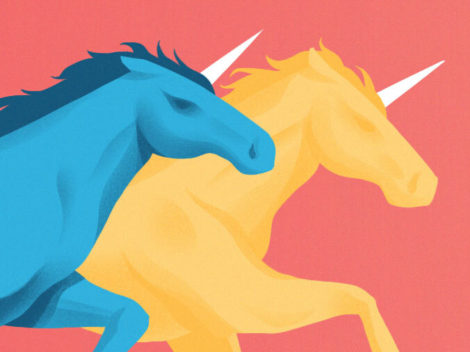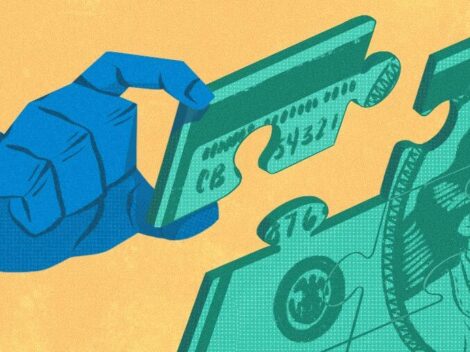Morning Report: It’s time for another Uber pre-IPO earnings report!
Uber recently detailed its second quarter financial performance, an array of numbers that detail its gross platform spend, net revenue, various costs, different profit metrics, and cash results.
Follow Crunchbase News on Twitter
The full set of numbers—the WSJ has the best collection of historical Uber results, in which we’re placing our trust—paints the picture of a massive corporation growing quickly at high cost. In that sense, nothing has changed for Uber form Q1 to Q2. But, there are some things worth discussing all the same.
First, a quick reminder of what Uber’s second quarter looked like. Then, what to take away.
Results
Uber’s gross bookings (the value of goods and services transacted on its platform) rose to $12.0 billion in the second quarter, up 6.4 percent from the sequentially preceding quarter, and 40.8 percent from the year-ago Q2. Net revenue came in at $2.8 billion, up 8.2 percent from Q1 of the same year, and 63.3 percent from the year-ago quarter.
The key media narrative thus far from those results is that Uber’s growth is slowing in percentage terms. As CNBC reports, Uber’s Q2 year-over-year net revenue growth is down from a 67 percent growth from the year-ago quarter it booked in Q1.
That’s directionally true, but for perspective Uber grew its net revenue by $181 million from Q4’17 to Q1’18. And from Q1’18 to Q2’18, Uber’s slowing (percentage) performance included $213 million more net revenue.
We’re not here to cut Uber slack, but remember to pay attention to sequential, dollar-based changes to Uber’s results over time as it works towards IPO-ish profit results, not just year-over-year growth metrics.
Moving along, Uber’s cost of revenue came in at $1.23 billion, or 45.4 percent of net revenue, leaving the company with gross profit of $1.53 billion in the second quarter. The firm’s operating expenses of $2.24 billion were far greater than its gross profit, leading to a deficit of $614 million on an adjusted EBITDA basis (a wildly massaged profit metric that strips out many costs), and a net loss using what are implied to be GAAP (strict) accounting methods of $891 million.
It’s hard to compare lots of those figures to Uber’s prior results as the firm’s costs are lumpen. The company’s general and administrative expenses sway oddly, from $400 million in Q1’18 to $704 million in Q2’18, compared to $632 million in Q4’17. Figure that one out. Perhaps the firm fired everyone in Q1 and rehired them in Q2.
(We are not dealing with audited, SEC-ready results. Keep that in mind.)
Also Uber sold a piece of itself in Q1, allowing it to record $3 billion of income, pushing it into GAAP profit territory during the period. That’s why we won’t compare the firm’s Q1 and Q2 GAAP profits. It’s useless.
But we can say that Uber’s adjusted EBIDTA posted its second best result since Q1’17 in the second quarter of this year. The firm’s smallest-ever adjusted EBITDA loss came in Q1 of this year. So, by that adjusted metric, Uber’s two least unprofitable known quarters were the two found thus far in 2018. That’s encouraging.
Finally, Uber’s net cash consumed by operating activities was just $163 million the second quarter. Better than Q1’18’s $277 million of operating cash burn, and the second-best known result from the WSJ’s set of figures. Uber had about $7.3 billion in cash on hand at the end of its second quarter.
Ok, so that’s that. Let’s get to the fun stuff.
Thoughts
Uber collected a little over 23 percent of gross bookings as net revenue in the second quarter. That’s up from a little under 23 percent in the first quarter, and up from a smidge over 20 percent in the year-ago quarter.
From those numbers, we can see that Uber is slowly taking more of the pie over time, even as “net partner earnings” grow quickly in dollar terms: from $6.04 billion in Q2’17, to $7.81 billion in Q1’18, to $8.23 billion in the most recent quarter. Notably, net partner earnings (before promotions, incentives, and other “contra revenue” elements of Uber’s gross costs) were a little over 68 percent in Q2’18, down from just under 71 percent in the year-ago period.
These numbers help us understand that Uber is squeezing dollars out of its network. If the unicorn can take a larger cut of gross spend over time while boosting driver earnings, perhaps there is a point in which Uber’s business makes money for itself, and makes sense for drivers. That’s still far off, of course, and uncertain.
Uber’s cost structure remains far larger than its available quarterly gross profit. For example, in Q2 the company’s sales and marketing an general and administrative costs totaled $1.44 billion, or about 94 percent of gross profit. That’s before research and development costs and stock-based compensation, among other expenses.
Thus while Uber’s operating cash burn isn’t staggering, its collected cost structure is large and the firm deeply unprofitable. And, given the sheer gap between its operating costs and gross profit, Uber is a long drive from turning in positive GAAP anything.
It’s hard to tell when Uber may cross over to some sort of profitability. While its gross bookings expand, and its net revenue grows, so too do its costs. Uber’s Q2’18 sales and marketing costs were the highest at least since Q1’17. Its research and development costs set the same record, as did its general and administrative expenses. Depreciation was down, in fairness, and the company’s operations and support costs were only their third-highest ever. But, the big numbers keep going up as does Uber’s revenue. When you are operating at a stiff profit deficit, that’s not super encouraging.
Regardless, we’ll know more in three months. What would be interesting is if Uber managed to hold costs flat for a minute while its revenue grew. That would demonstrate that it may be able to chart a path to real profit. That might be enough for it to go public.
Top Image Credit: Li-Anne Dias

Stay up to date with recent funding rounds, acquisitions, and more with the Crunchbase Daily.


![Cloud computing device. [Dom Guzman]](https://news.crunchbase.com/wp-content/uploads/Cloud_Computing-1-470x352.jpg)


![Illustration of a guy watering plants with a blocked hose - Global [Dom Guzman]](https://news.crunchbase.com/wp-content/uploads/quarterly-global-3-300x168.jpg)
67.1K Followers